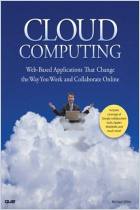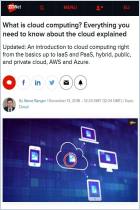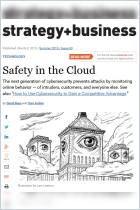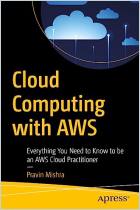Launching an online business used to require a great deal of time and money. You had to purchase the appropriate computers, rent a space, license software, and set up systems for accounting, human resources, and inventory. Today, by working with cloud vendors, you could start the same business with your laptop, sitting in a coffee shop, by accessing servers already set up with the software you need. In this practical text, tech consultant Anders Lisdorf offers an introduction to modern cloud computing and actionable guidance for your organization’s inevitable move to the cloud.
Cloud computing allows users flexible access to computing services via the internet.
The concept of a “cloud” suggests something dispersed and decentralized, and how that applies to technology isn’t self-evident. People initially used the term to denote abstract networks used in engineering. Later, the term was extended to include networks of interconnected computers that allowed users to work with the entire network at once, including all the information on it. In 2008, IT consultants at Gartner provided an updated and more exact definition of cloud computing: “scalable and elastic” digital capacities packaged as internet-driven services.
In 2011, the National Institute of Standards in Technology (NIST) in the United States provided a more comprehensive understanding of the cloud. That definition identified five principal characteristics of a cloud computing solution:
- End users must be able to access the necessary computing resources themselves, rather than requesting them from a vendor and then waiting for the vendor to provide them.
- The resources should be available on the internet.
- Resources...


















Comment on this summary or Démarrer une discussion